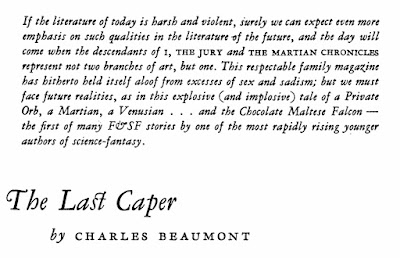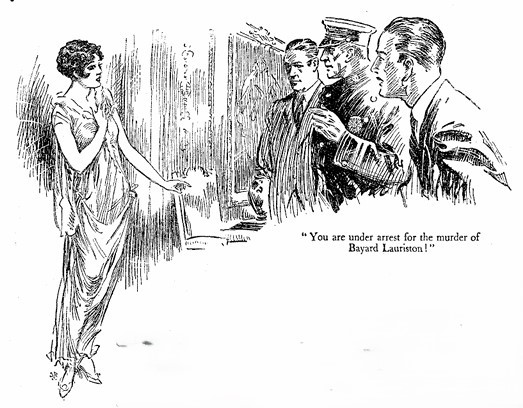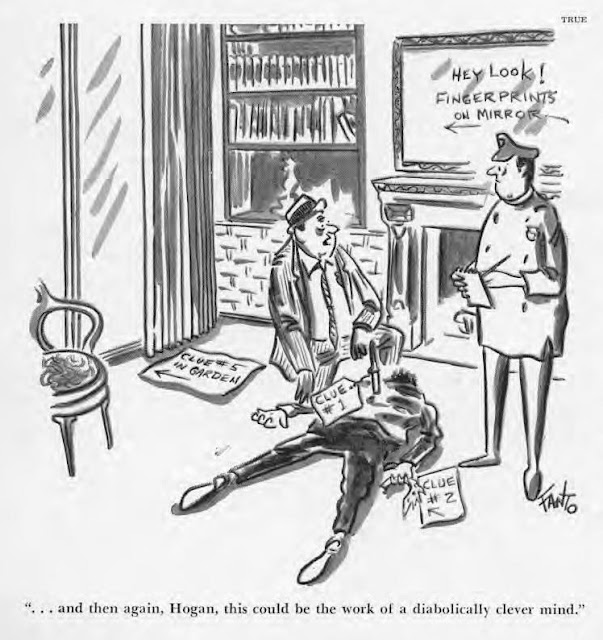. . . an excellent question, but you'll be lucky if you find the answer in . . .
"The Last Caper."
First appearance: Fantasy & Science Fiction, March 1954.
Reprints page (ISFDb HERE).
Short story (9 pages).
Online at SFFAudio (HERE).
"When his hand came off and dropped to the floor, I knew I was in for some surprises myself."
SOME THINGS will never change, like tough-guy private eyes and deadly dames . . .
Main characters:
~ Bartholomew Cornblossom ("She planted one on my kisser and I felt all May and golden fields of ripe wheat and barefoot in soft river mud"), Mike Mallet ("He went down—fast—and began to whimper"), the secretary ("Next time open the door before you come through it, big boy"), 1742-A ("I don't dig getting beat; not by a robot, anyway"), and the green snake guy ("We shall see now how bravely the Earthling struts!").
Typo: "a Girl rom".
References:
- I, the Jury (HERE).
- The Martian Chronicles (HERE).
- Brancusi statuettes (HERE).
- Bromo-Seltzer (HERE).
- Sterno (HERE).
- Sonnets from the Portuguese (HERE).
Astronomical mentions:
- Mars and Martians (HERE).
- Venus and Venusians (HERE).
- Uranus and Uranians (HERE).
- Jupiter and Jovians (HERE).
Resources:
- Another science fictional PI who forgot all about never taking cases from sexy dames can be found in Neil Gaiman's "The Case of the Four and Twenty Blackbirds" (HERE).
- Our only other encounter with Charles Beaumont was his "The Beautiful People," which was converted into a Twilight Zone episode (HERE).
Unless otherwise noted, all bibliographical data are derived from The FictionMags Index created by William G. Contento & edited by Phil Stephensen-Payne.
~~~~~~~~~~~~~~~~~~~~~~~~~~~~~~~~~~~~~~~~~~~~~~~~~~~~~~~~~~~~~~~~~~~~~~~~~~~~













%20headnote.jpeg)









.jpg)























